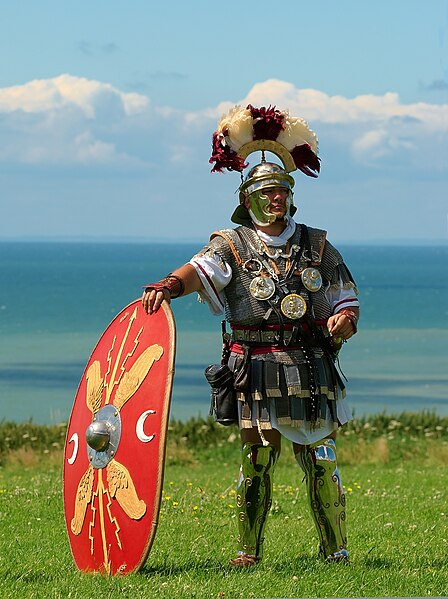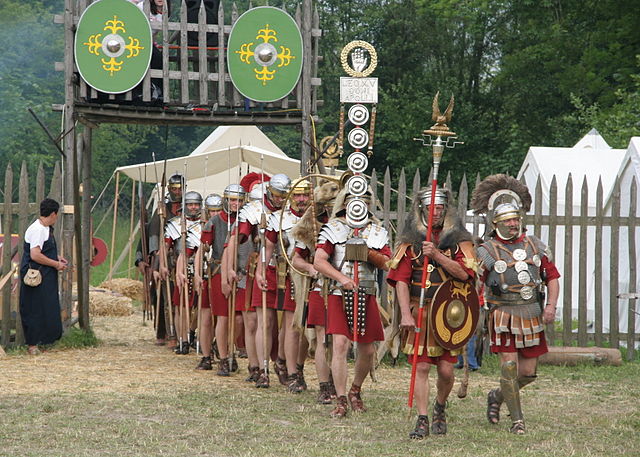The naval forces of the ancient Roman state were instrumental in the Roman conquest of the Mediterranean Basin, but it never enjoyed the prestige of the Roman legions. Throughout their history, the Romans remained a primarily land-based people and relied partially on their more nautically inclined subjects, such as the Greeks and the Egyptians, to build their ships. Because of that, the navy was never completely embraced by the Roman state, and deemed somewhat "un-Roman".
Three-banked ("trireme") Roman quinquereme with the Corvus boarding bridge. The use of the Corvus negated the superior Carthaginian naval expertise, and allowed the Romans to establish their naval superiority in the western Mediterranean.
Roman as coin of the second half of the 3rd century BC, featuring the prow of a galley, most likely a quinquereme. Several similar issues are known, illustrating the importance of naval power during that period of Rome's history.
Pompey the Great. His swift and decisive campaign against the pirates re-established Rome's control over the Mediterranean sea lanes.
Silver denarius struck by Sextus Pompeius in 44–43 BC, featuring a bust of Pompey the Great and a Roman warship.
The Roman legion, the largest military unit of the Roman army, was composed of Roman citizens serving as legionaries. During the Roman Republic the manipular legion comprised 4,200 infantry and 300 cavalry. After the Marian reforms in 107 BC the legions were formed of 5200 men and were restructured around 10 cohorts, the first cohort being double strength. This structure persisted throughout the Principate and Middle Empire, before further changes in the fourth century resulted in new formations of around 1000 men.
Depiction of Roman legionnaires
A historical reenactor in Roman centurion costume
Reenacters portraying Roman legionaries of Legio XV Apollinaris







